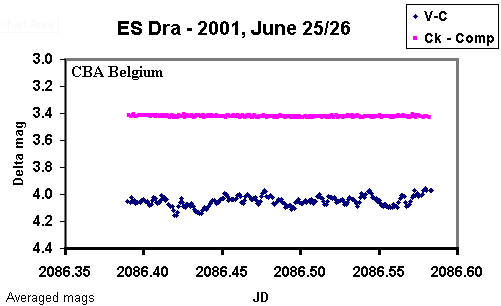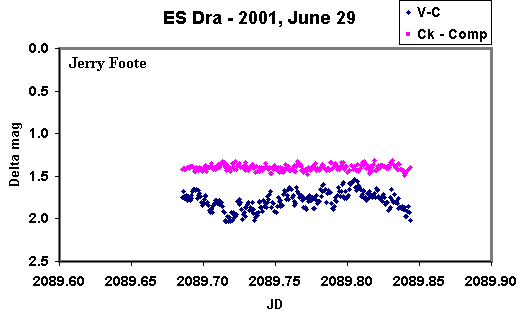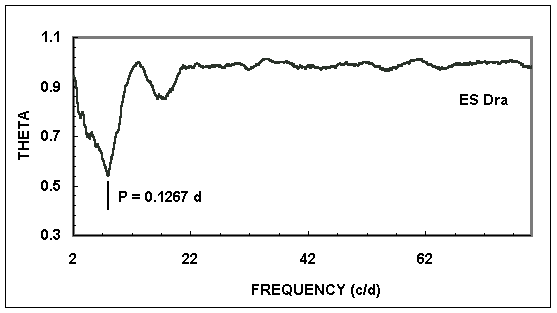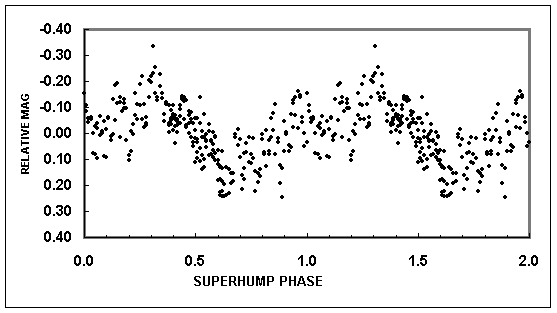 CBA
Belgium Observatory
CBA
Belgium ObservatoryES Dra is a new SU UMa type dwarf nova, just above the period gap !
 CBA
Belgium Observatory
CBA
Belgium Observatory
ES Dra is a new SU UMa type dwarf nova, just above the period gap !
ES Dra (= PG 1524+622, = Dra3 in D&S), located at RA = 15h25m31.8s, Dec = +62°01'00" (J2000.0) is classified as a possible UG-type cataclysmic variable with a magnitude range of 13.9p - 16.3p. The object is having infrequent outbursts, and is subject to few detailed studies only. Fred Ringwald has reported an orbital period of 4.24h (Ringwald, Ph.D. Thesis, Dartmouth College). In IBVS 3645, I. Andronov (Odessa State University) described his results of a screening of the object on 57 archival plates obtained at the 40-cm astrograph of the Crimean Laboratory of the Sternberg State Astronomical Institute. To search for possible orbital brightness variations, Andronov made a series of observations during three consecutive nights. He found weak peaks in the periodogram at periods of 1.07+-.08, 0.53+-.03 and 0.125+-.003 days. He added that these periods likely are unreal, despite brightness variations at least up to 0.4m that occurred with characteristic times of 0.10d-0.13d. During an outburst of ES Dra in October 2000, Jochen Pietz (Germany) performed CCD photometry on the object, during 1 night. His results did not reveal any modulations above 0.05 mag. |
|
On 2001, June 24.220 UT, Mike Simonsen (USA) reported another rare outburst of
ES Dra (vsnet-outburst 2435). I started a CCD photometry session on 2001,
June 25/26,
using the 0.35-m f/6.3 telescope at CBA Belgium Observatory. FITS images
were acquired with an ST-7 CCD camera without filters, and were instantaneously
processed and reduced (aperture photometry). |
 |
 |
|
On request of Joe Patterson (Columbia University, NY), the CBA launched an observing campaign on ES Dra, following the above announcement about the detection of 0.11 mag modulations in the light curve of ES Dra. As a result, we received a good data set of ES Dra observations from Jerry Foote (CBA Kanab, UT), obtained on 2001, June 29, during a session of 3.8 hours. His observations (see figure at left) clearly show the existence of full-grown superhumps, with an amplitude of 0.4 mag. A preliminary period analysis, using the PDM technique, reveals a dominant period of 0.1267 +/- 0.002d (see figure below). This is perfectly in line with my own findings. The above observations thus establish ES Dra as a new and interesting UGSU-type dwarf nova, just above the period gap.
|
 |
 |
| ES Dra period analysis | ES Dra phase diagram |